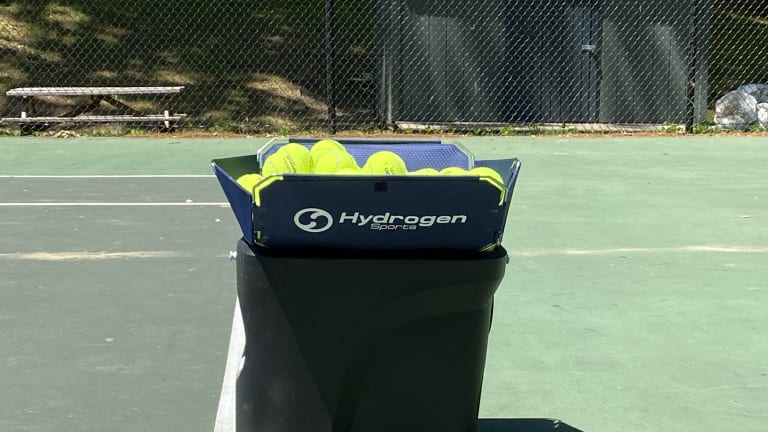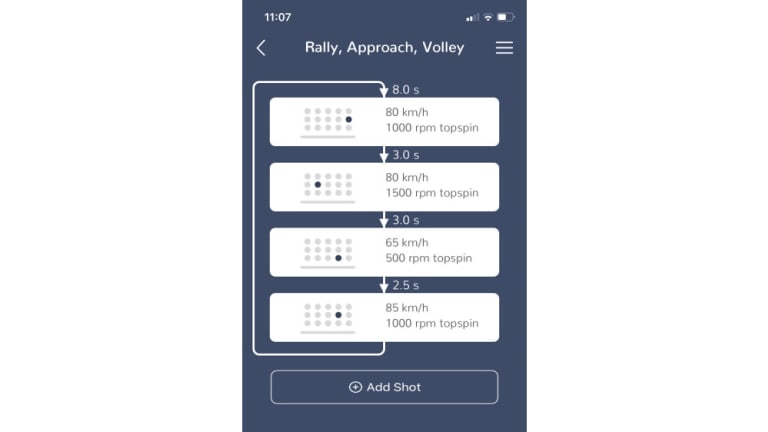It looks like a paper shredder.
That was my first impression of the Proton ball machine. This was back in 2020 at the Racquet and Paddle Sports Show when it was an entry in the (Shark Tank-inspired) Innovation Contest. Produced by Bay Area startup, Hydrogen Sports, the Proton was designed with state of the art technology to minimize bulk and maximize performance. Founder Jonah Harley, a lifelong player, spent nearly a decade as an engineer at Apple and wanted to apply Silicon Valley know-how to create a smarter ball machine. After impressing the audience with its diminutive size, the Proton then proceeded to spit a 70 mph fastball into a nearby curtain. Needless to say, I was eager to get my hands on one.
Unfortunately it took a bit of time. After three years of development, the Proton’s rollout was stunted by the supply chain issues caused by the pandemic. Thankfully, those problems are beginning to subside and its availability starting to increase. It took a while to get here, but the Proton proved worth the wait.
Weighing less than 20 pounds and with the dimensions of a backpack, getting the Proton to the court was the definition of portability. Starting it up and getting the training session going was just as easy. Just set the machine down near the center hash on one of the baselines; fill its origami-like folding hopper with balls (it can hold up to 100); hit the power; open the app on your smartphone; and tap on one of the numerous pre-programmed routines that run from basic warm-ups to sophisticated multi-ball drills. It was as seamless as it gets. There is a digital control panel on the machine that allows hands-on control of the basic functions, but for the full experience operating with a smartphone is the way to go.
The feeds are delivered via high-performance drone motors that can shoot balls up to 70 mph with spins reaching 3000 rpms. Along with being deadly accurate, they were produced with just a low humming sound. I’ve played against many opponents whose vocal excesses were far more distracting. The machine is powered by interchangeable, rechargeable lithium-ion batteries. I never tested the longevity of a single charge—allegedly good for up to 1000 feeds—but I never had a problem making it through a two-hour training session.
From an operational standpoint, the functionality and programming capabilities of the app are what made the Proton’s performance so impressive. It basically allows users to be both as creative and as precise as they want. Hone in on a single stroke, or go nuts with an all-court scramble.
For instance, the app has a drill that feeds several side-to-side ground strokes, an approach shot and then finishes with a volley. It’s effective in stock form, but can be altered to suit particular needs. All it takes is making a duplicate copy of the drill in the custom programs section which allows the user to manipulate the characteristics of the feeds by simply tapping a court location on the screen. So it’s no problem if you’d prefer to flip the approach shot from forehand to backhand or add another volley to the end of the drill.

